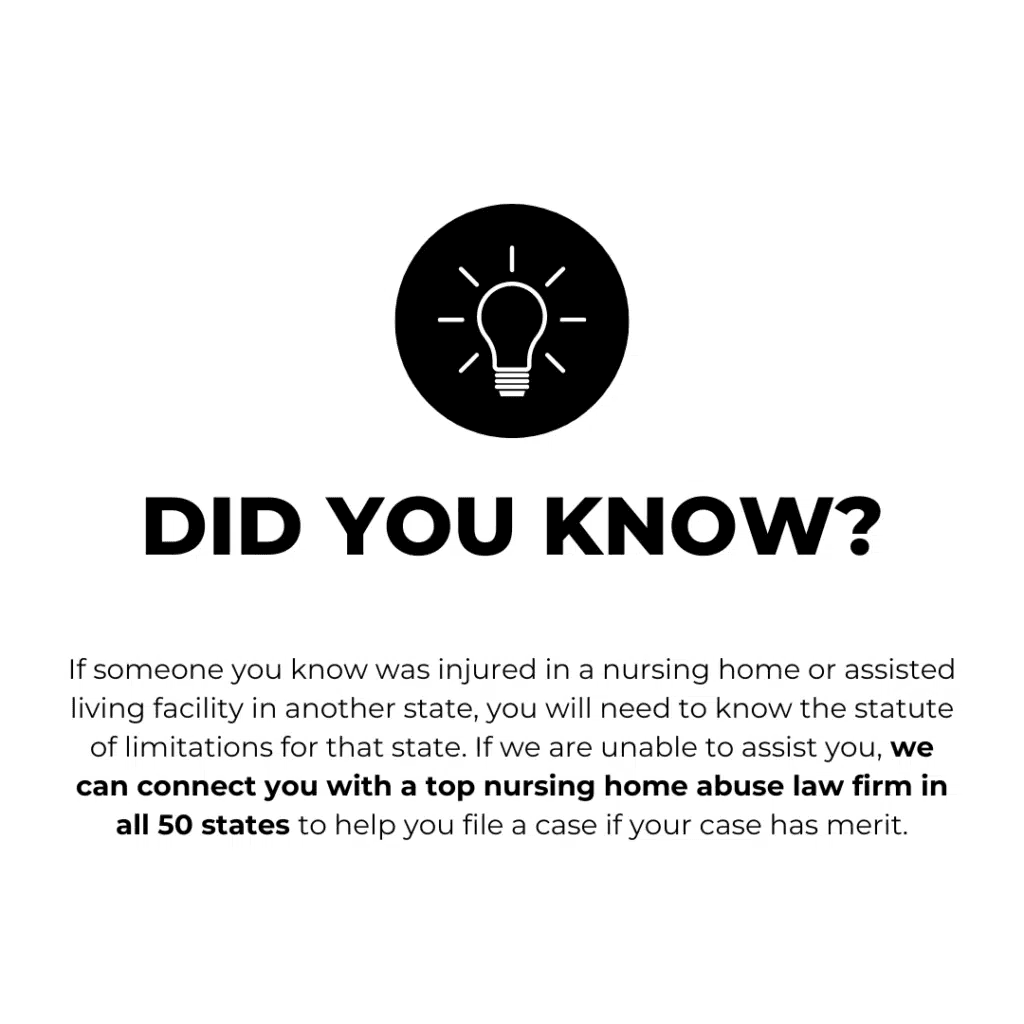
Nursing home abuse and neglect put vulnerable residents at serious risk, leading to malnutrition, dehydration, infections, and preventable injuries. When facilities fail to provide adequate care, residents suffer, and families are left feeling helpless. Lack of supervision, improper medical treatment, and unsafe conditions can result in devastating harm. Understanding the warning signs, knowing your legal rights, and holding negligent facilities accountable are crucial steps in protecting your loved ones. Learn how to take action and seek justice.
November 5, 2024
3 min
As the population ages, the role of physical therapy in nursing home care has become increasingly important. Physical therapy is essential for helping residents maintain or regain mobility, manage pain, and improve their overall quality of life. Nursing home residents often face a myriad of health challenges, including limited mobility, chronic pain, and a heightened risk of falls. Physical therapy addresses these issues through tailored interventions, making it a cornerstone of comprehensive care in nursing homes. This article will explore the multifaceted role of physical therapy in nursing homes, highlighting its benefits, various interventions, and its contribution to the overall well-being of residents.
The demographic shift toward an aging population has increased the demand for nursing home services. As people live longer, the prevalence of chronic conditions such as arthritis, osteoporosis, and cardiovascular diseases has risen, leading to more significant physical limitations. Nursing home residents often require assistance with daily activities, and many have experienced strokes, fractures, or surgeries that further limit their mobility. In this context, physical therapy becomes indispensable. It not only aids in the recovery from acute health events but also helps manage the ongoing physical challenges of aging.
Moreover, the shift toward a more holistic approach to healthcare in nursing homes has placed greater emphasis on maintaining the overall well-being of residents. Physical therapy, focusing on mobility, strength, and pain management, is a key component of this approach. It helps residents stay active as possible, which is crucial for maintaining physical and mental health. In nursing homes, where residents may spend a significant portion of their day sedentary, the role of physical therapy in promoting movement and activity cannot be overstated.

One of the most significant benefits of physical therapy is its ability to improve a resident’s mobility and independence. Physical therapy programs are tailored to the individual needs of each resident, focusing on exercises that strengthen specific muscle groups, improve flexibility, and enhance coordination. For residents who have experienced strokes or fractures or who suffer from conditions like Parkinson’s disease, physical therapy can be life-changing. It enables them to regain the ability to perform daily activities, such as walking, dressing, and eating, with greater ease and confidence.
Independence is a critical aspect of the quality of life for nursing home residents. The ability to move independently reduces the need for assistance from caregivers, boosting the resident’s self-esteem and reducing the burden on nursing home staff. Moreover, independent movement allows residents to engage more fully in social activities, essential for their mental and emotional well-being.
Chronic pain is common among nursing home residents, often stemming from conditions such as arthritis, osteoporosis, and previous injuries. Physical therapy plays a vital role in managing this pain through a variety of techniques. These techniques may include manual therapy, where the therapist uses their hands to manipulate muscles and joints, and exercises designed to strengthen muscles and reduce the strain on painful areas.
Physical therapists also use modalities such as heat and cold therapy, electrical stimulation, and ultrasound to alleviate pain. These techniques can help reduce the need for pain medications, which often come with side effects that can affect a resident’s overall health. By managing pain effectively, physical therapy improves nursing home residents’ comfort and quality of life.
Falls are a leading cause of injury among nursing home residents, often resulting in fractures, hospitalizations, and a decline in overall health. Physical therapists play a crucial role in preventing falls by assessing each resident’s risk factors and developing personalized exercise programs to address them. These programs typically focus on improving balance, strength, and coordination, vital in preventing falls.
In addition to exercise, physical therapists may recommend assistive devices, such as walkers or canes, and ensure that residents know how to use them correctly. They may also work with the nursing home staff to make environmental modifications, such as improving lighting, removing tripping hazards, and installing bathroom grab bars. Through these interventions, physical therapy significantly reduces the risk of falls, thereby enhancing the safety and well-being of residents.
Physical therapy profoundly impacts the overall quality of life for nursing home residents. Regular physical activity, as facilitated by physical therapy, is associated with numerous health benefits, including improved cardiovascular health, better mental health, and a reduced risk of depression and anxiety. Engaging in physical therapy sessions gives residents a sense of purpose and achievement, which is crucial for their mental and emotional well-being.
Furthermore, physical therapy helps residents maintain physical fitness by allowing them to participate in social and recreational activities. These activities are essential for supporting cognitive function, reducing feelings of isolation, and promoting a sense of community within the nursing home. By enhancing physical fitness and reducing pain, physical therapy enables residents to engage more fully in life, which is essential for their overall happiness and satisfaction.
Many nursing home residents have undergone surgeries, such as hip or knee replacements, that require specialized care during recovery. Physical therapy is a critical component of post-surgical rehabilitation, helping residents regain strength, improve range of motion, and return to their previous level of function. Physical therapists work closely with surgeons and other healthcare professionals to develop individualized rehabilitation programs that meet the specific needs of each resident.
These programs often include exercises that target the muscles and joints affected by surgery and techniques to reduce pain and swelling. The goal is to help residents recover as quickly and thoroughly as possible, allowing them to regain their independence and return to their usual activities. Physical therapy is vital for older adults, whose recovery may be slower and more complicated due to age-related factors. By providing targeted rehabilitation, physical therapy helps ensure a successful recovery and a return to a higher quality of life.
Physical therapy in nursing homes encompasses a wide range of interventions, each tailored to meet the specific needs of residents. These interventions are designed to address the unique challenges faced by older adults, including muscle weakness, joint stiffness, and impaired balance. Some of the most common physical therapy interventions in nursing homes include:
Physical therapy in nursing homes is most effective when integrated into a collaborative care model. This model involves close cooperation between physical therapists, nurses, physicians, occupational therapists, and other healthcare professionals to create comprehensive care plans that address the holistic needs of each resident. Collaboration is key to ensuring that all aspects of a resident’s health care are considered, leading to better outcomes and a higher quality of life.
For example, a physical therapist may work with a nurse to monitor a resident’s pain levels and adjust their exercise program accordingly. They may also collaborate with an occupational therapist to help a resident regain the ability to perform daily activities, such as dressing or bathing. In some cases, physical therapists may even work with dieticians to ensure that residents receive the proper nutrition to support their physical therapy goals.
This team-based approach is particularly important in nursing homes, where residents often have complex medical needs that require coordinated care. By working together, healthcare professionals can provide a more comprehensive and personalized care approach, ultimately benefiting the resident.
Physical therapy is an essential component of nursing home care, offering numerous benefits that enhance the lives of residents. By improving mobility, managing pain, preventing falls, and supporting post-surgical recovery, physical therapy helps residents maintain their independence and enjoy a better quality of life. In an aging population where the demand for nursing home services continues to grow, the importance of physical therapy cannot be overstated.
For families and caregivers, understanding the role of physical therapy in nursing homes is crucial in advocating for the best possible care for their loved ones. By ensuring that physical therapy is an integral part of the care plan, they can help their loved ones achieve the highest possible level of physical and mental well-being. As the healthcare industry continues to evolve, the role of physical therapy in nursing homes will only become more significant, making it an indispensable part of the care provided in these facilities.
Michael Hill is a nationally recognized attorney who handles exclusively cases against long term care facilities. Michael and his firm, Michael Hill Trial Law, handle cases across the country.
Disclaimer: This information is provided for informational purposes only. Nothing in this article should be construed as providing legal advice or the creation of an attorney client relationship. Laws are updated frequently and change from state to state. If you desire legal advice, you can contact Michael Hill Trial Law at www.protectseniors.com, send an email to info@protectseniors.com, call (800) 659-2712 to begin an investigation, or contact another attorney.